As kids head back to school this fall, we can all be inspired to learn something new. We have to! Hiring has gone from challenging to nearly impossible, placing an emphasis on learning programs that enrich and develop the skills of current employees. Our focus for this newsletter therefore is all about learning on the job.
In this issue, we answer your top questions about eLearning, evaluate the top learning trends, show you how to calculate ROI for your Learning & Development (L&D) program, and showcase virtual reality for developing soft skills.
Learning opportunities can help your employees perform better, but did you know that great training is a powerful retention tool, too? As always, I welcome the chance to continue the conversation via email or with a call.
Edward Tuorinsky
Managing Principal
DTS
Edward.Tuorinsky@consultDTS.com
571.403.1841
Learning at Work FAQs
DTS experts answer pressing questions about L&D for today’s workforce

Q: There’s no going back – hybrid is here to stay. How can we make sure we’re accommodating the learning needs of everyone in our workforce?
This type of learning is not a one size fits all model and its more important than ever to pay attention to how the workforce is joining, so facilitators can provide consistent learning opportunities from learner to learner. A good rule of thumb to remember is the learners that join the learning environment the same way the facilitator joins will have the learning advantage. Therefore, in a hybrid learning module, it is important to make sure there is equal opportunity for the learners that have joined differently. As the facilitator, you must level the playing field. This might be in the form of a secondary online facilitator or chat room if the main facilitator is in-person or providing individuals that are in-person an opportunity to log in individually to join virtual chats if the facilitator is virtual.
Q: Our people are stretched thin so getting them to commit to day-long classes or weeklong workshops is met with resistance. How can we make learning part of every day?
One could argue learning is happening every day whether we know it or not. The question is what kind of learning is happening and can we structure that learning in a more meaningful way to facilitate the learning outcomes we desire? We’ve seen successful models where a team may be required to go through a self-paced online class, but a team leader will create a space for follow-on discussions to verify what was learned and amplify and connect content to relevant work scenarios. Some teams may benefit from a regularly dedicated time for learning where members are given license to explore something that gets crowded out by client work but may lead to innovative solutions.
Q: We have serious technology fatigue. What are some alternatives to webinars and video calls?
Lately, we have found ourselves meeting, socializing, and working all in the same chair in front of the same screen. To beat the fatigue, we suggest getting your body moving and blood pumping! A little exercise can reduce stress and chase away those midday headaches brought on by too much screen time. The solution could be as easy as taking video calls at a standing desk, scheduling walking meetings, or investing in a yoga ball chair. Also try breaking up your screen time by utilizing different technologies like virtual whiteboards, collaborative workboards, interactive brainstorming or workflow tools, and even a few games to reenergize your team.
Q: Immersive technology sounds so cool, but our content is pretty basic. Can we still use it?
Immersive technology is not just for gamification, it has many applications and can be applied in many ways. Immersive technology is about getting “inside” the content and making the content perceptible by touch. Depending on your content, your budget (because it’s not cheap), and a little imagination, even the simplest content can be delivered using immersive technology. The better question to ask is whether using an immersive technology approach and expending the high level of effort and expense it takes to develop the content will bring a better return on your investment.
Q: Our L&D programs take months to develop and implement. How can we become more agile about identifying what we need and delivering it fast?
To be agile in instructional design and development, you need to develop and document an efficient design and development process and stick to it. Map out your path from conception to completion. Look for areas that may expand your schedule or cause delays and determine the most efficient way to get through those areas. For example, how many client reviews are in your process and when? Do you often find your content in a second or third “final review?” Identify why these time killers are happening and adjust. Maybe your client reviews are coming too late in the process or maybe your audio recording is happening too early in the process. Streamlining development doesn’t mean you have to sacrifice quality. If anything, it tightens up your processes.
Q: Is on-the-job training more effective before or after classroom-based learning?
This is reminiscent of the question, which came first, the chicken or the egg? Both methods are equally effective when the desired outcome is a transfer of specific knowledge. However, when these methods are used in isolation, the question becomes more significant. For example, classroom-based learning may not provide the learner with enough context or relevancy for them to transfer the knowledge back to their task. Or vice-versa, on-the-job-training may not provide enough foundational information for the learner to understand why they are completing a task a certain way. A better approach is to blend these two modules so learners experience both classroom learning that is applicable and on-the-job training to practice real-word tasks.
Q: Cybersecurity is a top priority. How can we make sure our people are putting into practice the new skills they learn?
There will always need to be some level of accountability to nudge people into new habits for cyber security or desired behaviors. System initiated monitoring and reminders, such as reviewing an access list, help people accomplish and meet a security policy. Auditing in priority areas of new cyber practices needs to be included. People need to know that there is not only an expectation but also genuine accountability for putting these new practices to work. After some agreed transition point, the ability to practice these new skills needs to be tied to annual performance assessments.
Q: Why is humor and fun an important component for corporate learning?
When learners are having fun and enjoying appropriate humor, the environment becomes a safe place where participants are more willing to immerse themselves and take risks without fear. Corporate learning is usually not a once-only learning event; it requires repetition. Incorporating fun can also positively motivate learners and stimulate curiosity, which encourages the learners to return to the specific learning event, thus activating content retention.
Check in on eLearning Trends
 The beginning of the year brings a slew of forecasts about the months ahead. We were really interested in several that predicted some major growth for eLearning in 2021 to navigate hybrid situations and a more dispersed workforce. Now, comfortably past the half-way point of the year, we can see how spot-on some of these trend predictions really were. PS: It’s not too late to get on board and put them to use in your environment! Read the forecasts from the eLearningIndustry.com blog: 8 learning trends for 2021.
The beginning of the year brings a slew of forecasts about the months ahead. We were really interested in several that predicted some major growth for eLearning in 2021 to navigate hybrid situations and a more dispersed workforce. Now, comfortably past the half-way point of the year, we can see how spot-on some of these trend predictions really were. PS: It’s not too late to get on board and put them to use in your environment! Read the forecasts from the eLearningIndustry.com blog: 8 learning trends for 2021. Calculating ROI for L&D Efforts
Most executives see virtual learning as a cost and not an investment – and that puts these convenient options in a precarious place. Funding may be cut, employees may not prioritize the time for learning, and resources may be wasted. Cutting right to the core of this issue, studies show that organizations rarely measure the one outcome of virtual learning that leadership desires most: job impact.
We know – and can point to thousands of real-world examples – that well-planned virtual and self-paced learning programs absolutely do have an impact. Chief Learning Officer Magazine has developed a formula for gathering data and measuring the ROI for each L&D program. The results might just give you a new perspective on virtual learning!
Using VR to Develop Soft Skills
 Working from home has its perks but developing critical soft skills – like leadership, teamwork, and conflict resolution – aren’t among them. Fortunately, L&D has a new tool that offers an immersive experience where employees can develop these skills – it’s virtual reality (VR). The Harvard Business Review highlights how VR can be used for customer service training, presentation skills, and sales. Read the full article.
Working from home has its perks but developing critical soft skills – like leadership, teamwork, and conflict resolution – aren’t among them. Fortunately, L&D has a new tool that offers an immersive experience where employees can develop these skills – it’s virtual reality (VR). The Harvard Business Review highlights how VR can be used for customer service training, presentation skills, and sales. Read the full article.
Calculating ROI for L&D Efforts
Most executives see virtual learning as a cost and not an investment – and that puts these convenient options in a precarious place. Funding may be cut, employees may not prioritize the time for learning, and resources may be wasted. Cutting right to the core of this issue, studies show that organizations rarely measure the one outcome of virtual learning that leadership desires most: job impact.
We know – and can point to thousands of real-world examples – that well-planned virtual and self-paced learning programs absolutely do have an impact. Chief Learning Officer Magazine has developed a formula for gathering data and measuring the ROI for each L&D program. The results might just give you a new perspective on virtual learning!
Service Spotlight
Learning solutions for retention, performance, and mission success
DTS’ training and learning enhancement solutions go far beyond developing and presenting materials. Our consultants guide organizations through a lifecycle of needs evaluation, planning, curriculum and materials development, and presentation. We use traditional and new, innovative methodologies for employee retention, performance, and mission success. For more details visit our Learning page.
CMMC News
DTS continues to follow CMMC updates very closely, and commits to providing this information to our clients in plain language, with actionable take-aways.Top News
- DoD is still reviewing comments from the interim. The final DFARS CMMC rule and an update to the CMMC Model is expected are expected in November/December 2021.
- Although three C3PAO’s are approved, meaning they have passed their DIBCAC assessment, they are not yet authorized to conduct certification assessments.
- The CMMC-AB has set up an Industry Advisory Council (IAC) to serve as a check-and-balance for the AB’s practices and costs.
Read our recommendations for understanding and responding to these news items at News and Recommendations.
About DTS
DTS consultants go far beyond just “getting the job done.” We continually find better, more efficient and more effective ways to satisfy the needs of our public- and private- sector clients. DTS provides full lifecycle Management and IT consulting services, and can support your organization by researching and answering specific questions, solving critical issues or helping you plan for the future. Among a crowded field of contractors, DTS stands out for the quality of our people, the power of our approach, and the impact of our results. www.consultDTS.com
Continue the conversation:
Email sales@consultDTS.com or call 571.403.1841


